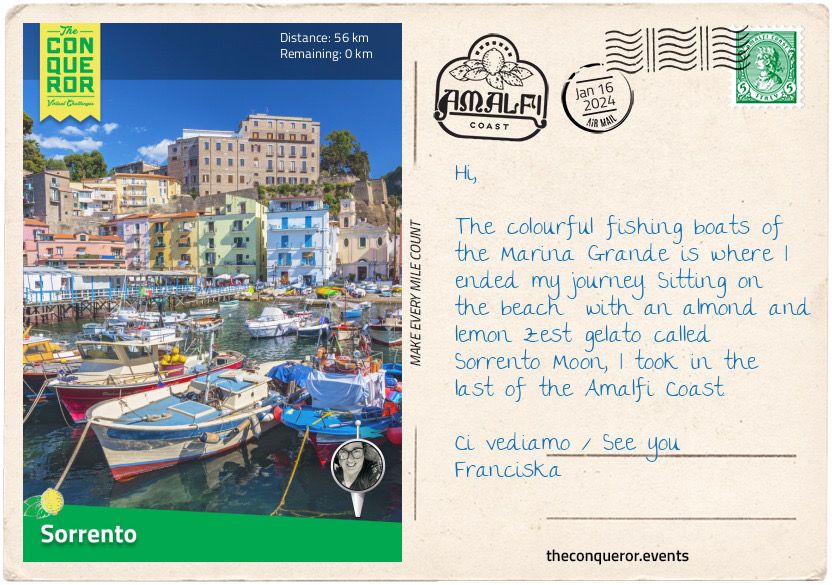Amalfi Coast Challenge: Stage 7
- Franciska Neuhäuser
- Jan 16, 2024
- 2 min read

Cutting across the Sorrentine Peninsula, I arrive in Sorrento, my final destination. Overlooking the Bay of Naples, Sorrento is a laid back town that is known for its marquetry, Sorrento lemons, and Limoncello.
Housed in an 18th century building is the Inlaid Wood Museum that showcases Sorrento's long history of marquetry furniture. Thin sheets of wook, cut into intricate patterns were adhered to furniture creating decorative pieces for the home. The museum's collection covers periods from 1400-1800AD exhibiting various furniture pieces and explaining the techniques and tools used by the artists. Around 700 skilled artisans continue this tradition blending historical techniques with modern processes.
Sorrento lemons are a variety that are PGI (Protected Geographical Indication) certified. Described as medium to large, oval-shaped citrus fruit with a thick skin, very juicy pulp, and almost seedless, what makes it unique is its peel that is rich in essential oils; making it highly fragrant. The lemons are grown on tall wooden frames (as high as 15ft / 5m) in order to protect them from the elements and allow the fruits to ripen slowly. Historically, it was only handled by women, with trimmed nails, wearing cotton gloves to protect the fragile rind from damage and subsequent fungal rot. The Sorrento lemons as with the Amalfi lemons are a staple fruit on any Italian table.
The Sorrento lemon is also used for producing the somewhat sweet liqueur known as Limoncello. At least 60% of the Sorrento lemons grown are reserved for the production of the liqueur. Used as an apertif or a digestif, Limoncello is typically served chilled without ice and sipped slowly. It is made from le,on zest, water, alcohol, and sugar. Because the zest is the main component of the liqueur the lemons are usually hand-picked in order to prevent it from contacting the ground and bruising the peel.
Continuing with this versatile citrus fruit, a great way to finish a wonderful journey along the Amalfi Coast is with a Pasta al Limone (aka Pasta in lemon sauce - it sounds so much better in Italian). Cooked pasta is added to a sauce of butter, garlic, and lemon zest, and tossed til it's coated, then grated parmesan cheese mixed through to thicken the sauce. Lemon juice is added to taste and seasoned with salt and pepper then garnished with more grated parmesan and lemon zest.
Arivederci / Until we meet again.
To be honest, I feel a bit "meh" about having completed this challenge - no doubt due to the length of time between starting it and completing it.
I think I'll visit Paris next.









Comments